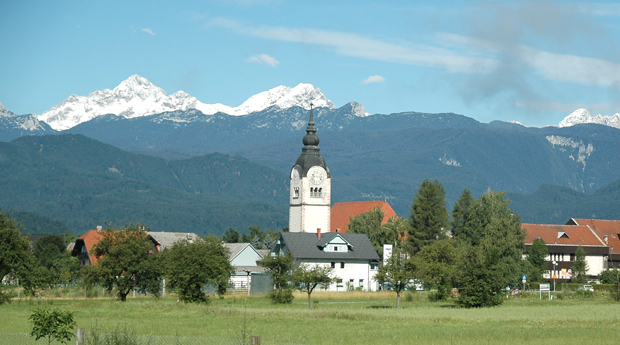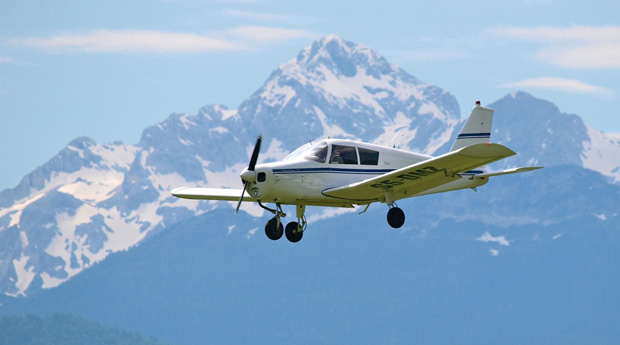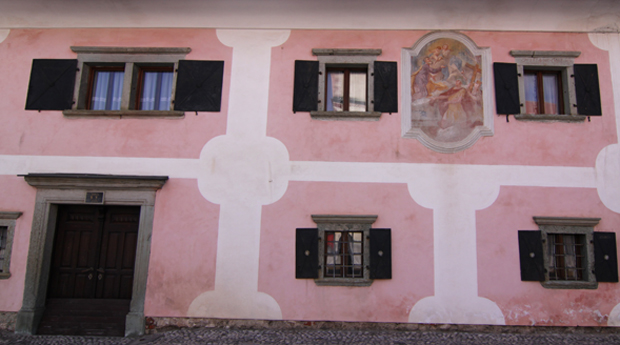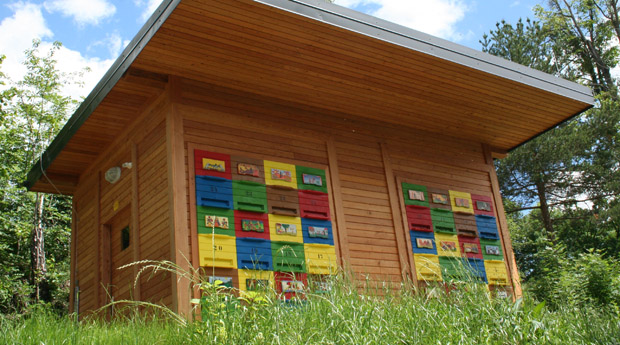- KEYBOARD NAVIGATION
- DISABLE ANIMATIONS
- HIGH CONTRAST
- BLACK & WHITE CONTRAST
- INCREASE TEXT SIZE
- DECREASE TEXT SIZE
- MARK TITLES
- MARK LINKS
- UNDERLINE LINKS
Lesce
Once a small village, today the capital of skydiving and the home of the Gorenjka chocolate factory.
Lesce is home to the Lesce Alpine Sports Airfield, the Beekeeping Education Centre of Gorenjska, the Gorenjka Chocolate Factory, as well as the nearby Šobec Campsite with its natural lake, and Bled Golf Club – one of the most beautiful in central Europe. There is a cycle track from Lesce to Bled and a walking path to the Šobec camp.
Due to its excellent rail and road links and position, Lesce is an ideal base from which to explore alpine and central Slovenia. The range of accommodation available in Lesce is very diverse.
Today, the old village centre of Lesce is only a small part of the entire settlement. From afar it is distinguished by the high belltower of the Church of the Assumption of Mary, which is one of the oldest pilgrimage churches in Slovenia. Next to the church there are tightly-packed homesteads whose owners were formerly involved in farming and commerce. The 17th century Legatova hiša (Legat's House, Begunjska cesta 6) is a beautiful example of a rural manor. Španova hiša (Span's House, Begunjska cesta 2), is another example of rich rural architecture. It reflect the typical style of the homes of wealthy farmers in the 18th and 19th centuries. There is a small decorative turret on one corner of the house.
The history of Lesce
Lesce is among the oldest villages in Gorenjska. Its central location on a terrace above the Sava Dolinka river, as well is its favourable strategic transport position, were of significant importance in its formation and development. Archaelogical finds date back to Roman times and the early period of Christianity. In the Roman era there was a settlement here that served as a centre of commerce, and had a post office and police station at the crossroads of routes towards Bohinj, Jesenice, Tržič and Kranj. Lesce was first mentioned, together with Bled, in 1004 in the Charter of the Briksen Diocese.
Construction of the Gorenjska railway was decisive in the extensive development of Lesce in the second half of the 19th century. The railway station in Lesce is located on a plain below the old part of the village and its construction became a springboard for the development of industry. In the 20th century the original small village developed into an industrial hinterland of nearby Radovljica. Today Lesce railway station still remains the main railway station in the Municipality of Radovljica.
Related news
Take a panoramic flight from Lesce sports airfield and enjoy a bird's eye view of Triglav National Park.
Visit the Beekeeping Education Centre of Gorenjska where you will found out about modern beekeeping and enter the secret world of bees.
A camp on the banks of the Sava river between Bled and Lesce which offers a wonderful place in nature.







